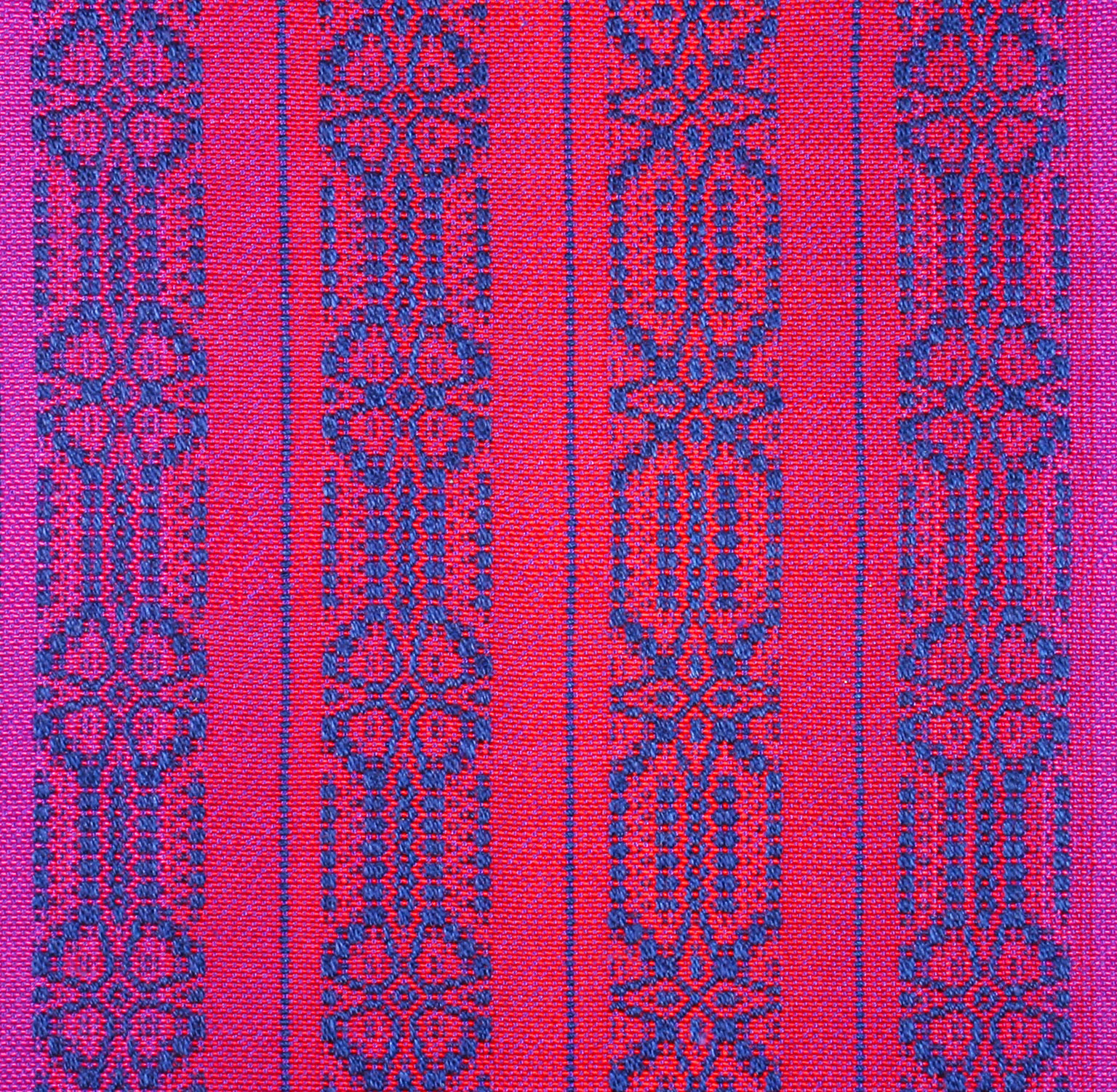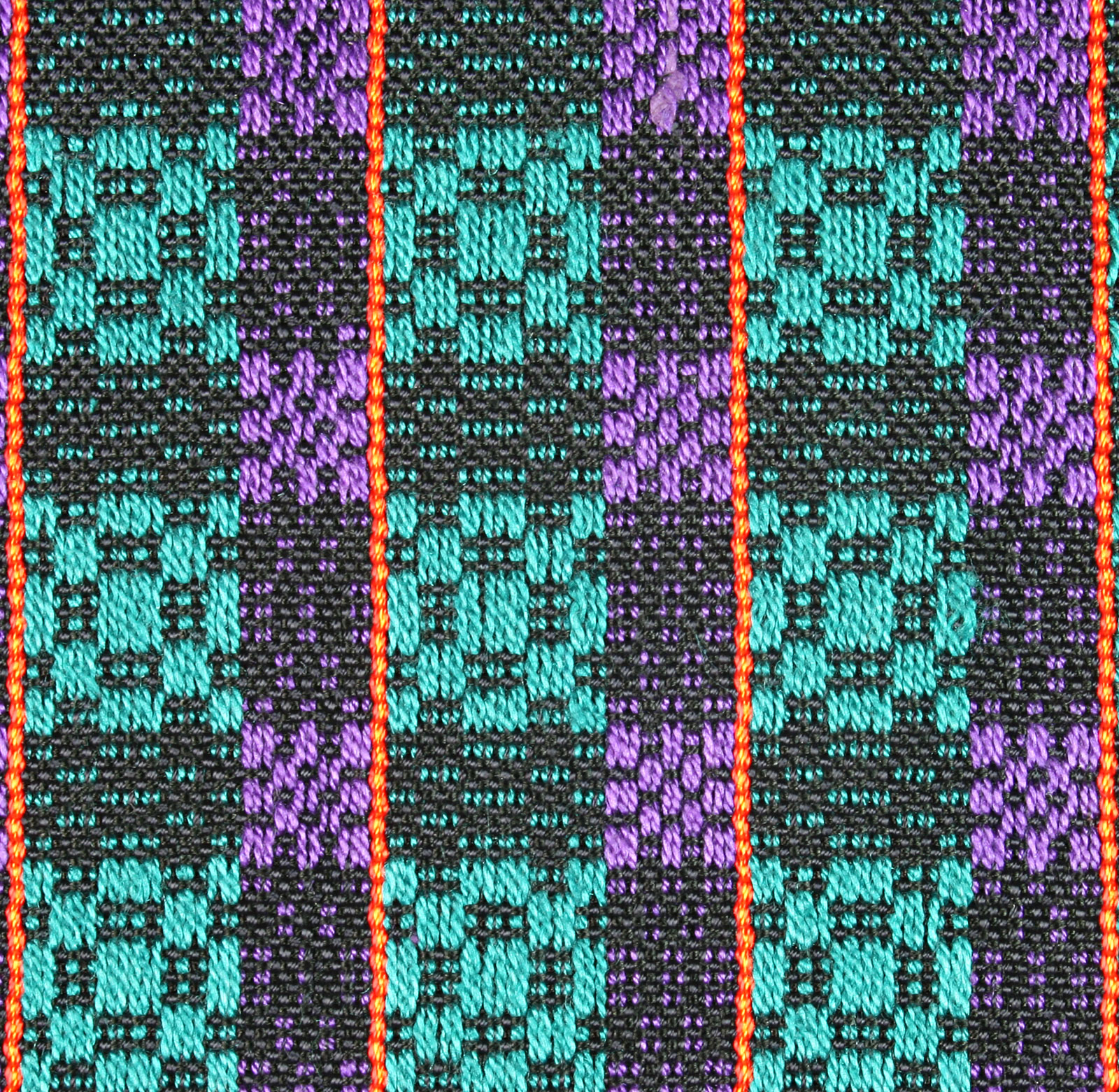Weaving Workshops
Color-and-Weave Duets
This three-day, round-robin workshop demonstrates how color sequencing can totally transform the appearance of a weave structure. Start with a basic weave structure such as plain weave or twill, add an alternating color sequence, add two shuttles, mix together, and voilá: color-and-weave cloth.
Whether you’re a color/texture weaver or a structure junkie, you’ll enjoy weaving duets of structures and color-and-weave counterparts, and learn a few woven embellishments to add to your repertoire. Suitable for new weavers and the experienced, this workshop can be a wonderful mentoring experience for a guild.
Signature Blocks
This three-day workshop for intermediate and advanced weavers introduces a new approach to block weave design. Combine one part block weave structure, plus one part quirky design, plus one part coded message to equal the fun of block name drafting. You will learn to encode names or phrases to create a tiling effect with contemporary overshot motifs, without those pesky incidental threads. In addition, you will use color encryption to design stripe sequences and apply these principles to other block weave structures.
Students will design their own projects derived from block name drafts provided by Barbara. Each student must have a basic knowledge of overshot and be able to develop a project independently.
Stripes with Attitude
Bold or subtle, stripes can be so much more than different colored threads. This three-day, round-robin workshop for intermediate and advanced weavers examines the roles color, texture, pattern, and structure play in designing stripes with a high WOW factor. You will learn how to turn drafts, extract portions to create patterned stripes, and warp a loom with two warps. Sample weaving includes various uses of supplementary warps.
Supplementary Warp Patterning
Why confine yourself to only one warp? The use of two or more Warps opens up new and exciting opportunities for adding pattern to cloth. This three-day, round-robin workshop for intermediate and advanced weavers covers turned drafts and a wide range of supplementary warp applications that prove two warps are definitely better than one. After learning to dress a loom with more than one warp, you will explore many patterning techniques, most of which require only one shuttle.




